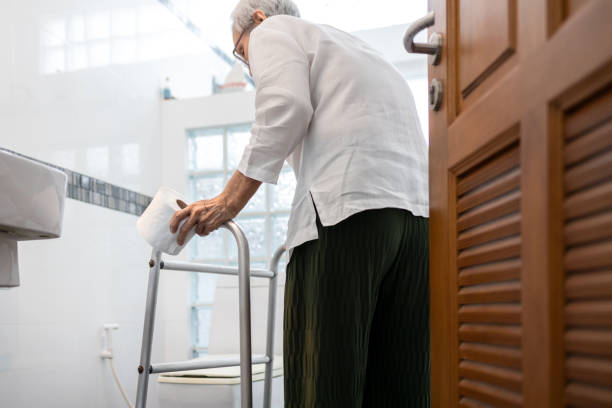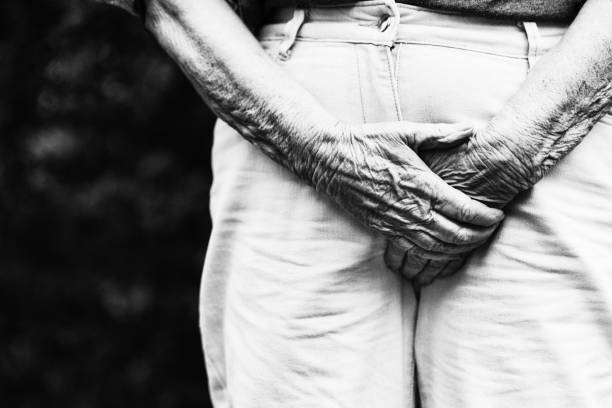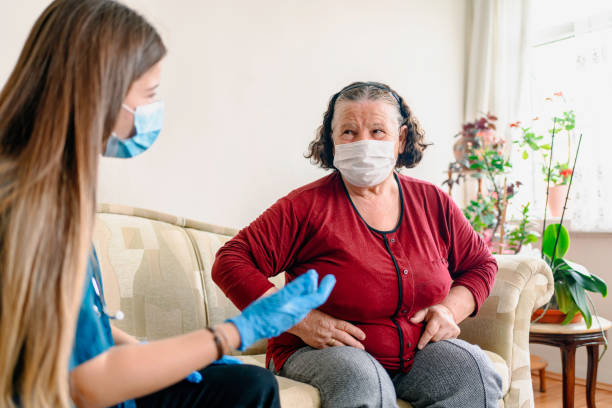Health Conditions
Discovering the Shocking Triggers Behind Urinary Incontinence in Seniors!
Our bodies change dramatically as we age, and some of these changes can provide unanticipated obstacles. Urinary incontinence is a common problem among the elderly. Urinary incontinence is the involuntary flow of urine, which can be embarrassing and uncomfortable for people affected. But what actually causes this illness among the elderly? Understanding the underlying causes is critical to appropriate management and treatment options. Throughout this essay, we will look at the several causes of urinary incontinence in the elderly, focusing on both physical and lifestyle factors. We will look at the various causes of urine incontinence, including weaker pelvic floor muscles, hormonal swings, and neurological abnormalities. With this information, the elderly and their caregivers can take proactive actions to recover control of their bladder function and enhance their overall quality of life. So join us as we explore the secrets of urine incontinence in the elderly.
Types of Urinary Incontinence
Urinary incontinence can present in a variety of ways, and recognizing the different types of incontinence is critical for effective therapy. The four most prevalent types of urine incontinence in the elderly are stress incontinence, urge incontinence, overflow incontinence, and functional incontinence.
Stress incontinence occurs when the bladder is under pressure, causing urine to leak. This type is frequently connected with decreased pelvic floor muscles, which can be caused by childbearing, aging, or other medical disorders. Urge incontinence, on the other hand, is characterized by a sudden and powerful urge to urinate, which causes leaking before reaching the bathroom. It is frequently accompanied with an overactive bladder and can be caused by neurological conditions such as Parkinson’s disease or strokes.
Overflow incontinence occurs when the bladder does not drain adequately, causing it to remain full or overflow. This type is frequently associated with weak bladder muscles or urinary system blockages, such as enlarged prostates in men. Finally, functional incontinence happens when physical or cognitive problems make it difficult for someone to use the restroom in time. This can be caused by diseases such as arthritis, dementia, or mobility limitations.

Common Causes of Urinary Incontinence in the Elderly
Urinary incontinence in the elderly can have a variety of causes, and it is critical to identify and address these underlying issues for effective management. Urinary incontinence can be caused by a variety of reasons, including age, medical problems, drugs, and lifestyle.
Age-Related Changes and Urinary Incontinence
Our bodies change naturally as we age, which might have an impact on bladder control. The muscles in the bladder and urethra may weaken, limiting their ability to store pee and control its discharge. Furthermore, the bladder may not empty fully, resulting in leftover pee, which can cause urinary tract infections and incontinence. Hormonal changes during menopause can also cause urine incontinence in women by impairing the strength and function of the pelvic floor muscles.
Medical Conditions and Urinary Incontinence
Various medical disorders might cause urine incontinence in the elderly. Multiple sclerosis and stroke are two neurological illnesses that can cause incontinence by disrupting the impulses between the brain and the bladder. Conditions that impair movement, such as arthritis, might make it difficult for people to use the restroom on time, resulting in functional incontinence. Other disorders that might cause urinary incontinence include urinary tract infections, diabetes, and prostate difficulties.

Medications and Urinary Incontinence
Certain drugs may have side effects that affect bladder control. Diuretics, which are widely used for illnesses such as high blood pressure, cause increased pee production, which can lead to urinary incontinence. Other drugs, such as sedatives, muscle relaxants, and antidepressants, might impair nerve signaling and bladder function, leading to incontinence. Elderly people should review their medications with healthcare providers to see if any are contributing to their urine incontinence.
Lifestyle Factors and Urinary Incontinence
Lifestyle choices can also influence the development of urine incontinence. Smoking, for example, can irritate the bladder, increasing the risk of incontinence. Excessive caffeine and alcohol use can function as diuretics, increasing pee output and potentially causing incontinence. Obesity can place additional strain on the bladder and pelvic floor muscles, increasing the likelihood of stress incontinence. Furthermore, prolonged constipation can weaken the pelvic floor muscles and impair bladder function.

Treatment Options for Urinary Incontinence in the Elderly
Fortunately, there are several treatments available for urine incontinence in the elderly. The underlying cause and degree of the incontinence determine the appropriate treatment. Conservative therapy, such as lifestyle changes, pelvic floor exercises, and bladder training, are frequently the initial line of defense. In some circumstances, medicines may be administered to alleviate overactive bladder symptoms or to strengthen the muscles surrounding the bladder. Surgical interventions may be considered in more severe situations or when conservative therapy prove futile.
Preventive Measures for Urinary Incontinence
While not all occurrences of urine incontinence are preventable, elderly people can take actions to lower their risk. Maintaining a healthy weight, performing pelvic floor exercises, and quitting smoking can all help improve bladder control. Limiting caffeine and alcohol usage, treating persistent constipation, and staying hydrated can all improve bladder health. Regular check-ups with healthcare specialists can help identify and treat any underlying medical disorders that may be causing urine incontinence.
Conclusion
Urinary incontinence is a common and often distressing condition that affects many elderly individuals, including myself. Understanding the causes and contributing factors is crucial for effective management and treatment options. Whether it’s weakened pelvic floor muscles, hormonal changes, neurological disorders, or lifestyle choices, various factors can contribute to urinary incontinence in the elderly. By addressing these underlying causes and implementing appropriate treatment options, elderly individuals and their caregivers, like me, can regain control over their bladder function and improve their overall quality of life. With a proactive approach and the help of healthcare professionals, urinary incontinence doesn’t have to be a barrier to enjoying life to the fullest.
Trusted Health, Wellness, and Medical advice for your well-being


